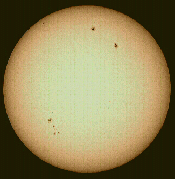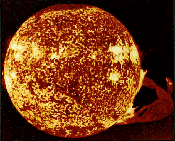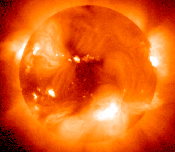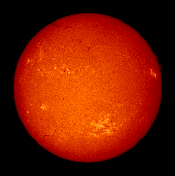Observing the Sun Through History

For much of history, humans have studied the sky and the Sun. Ancient people built structures
like Stonehenge to observe the Sun's passage through the seasons.

The advent of the telescope in the 1600s allowed astronomers such as Christopher Scheiner and
Galileo Galilei to observe and sketch sunspots. Solar flares were discovered in 1859 when Richard
Carrington focused his telescope on the Sun and saw a bright flash on the projected image.

Further study required escaping Earth's atmosphere, which distorts and limits our view
of the Sun and other celestial objects. By launching telescopes and instruments into space,
scientists can see the Sun in a whole new light.
|
From Stonehenge to Satellites

Like Earth, the Sun has seasons. More precisely, it has a cycle that lasts about 11 years. In this
sequence of images of X rays from the Sun's corona, notice how the corona changes from
solar maximum (left side) to solar minimum (right side). The bright areas are called
active regions, where intense magnetic fields trap hot plasma.
The number of sunspots rises and falls in about 11 years, called the sunspot cycle. A period marked
by many sunspots is known as solar maximum, while a quiet period with few sunspots is called
solar minimum. As the number of sunspots increases, so do the frequency and intensity of active
regions and solar storms. Scientists predicted that solar cycle 23 should peak in 2000-2001.
|
Seeing the Invisible

To unlock the Sun's secrets, scientists must find ways to see what is
invisible to the human eye. The Sun radiates energy in wavelengths,
most of which are outside the visible spectrum. For example, the Sun's
photosphere produces most of the light we see, while its corona produces X-rays
that can only be seen with special instruments. Each type of radiation carries
different information about the Sun's chemistry and magnetic field.

 |